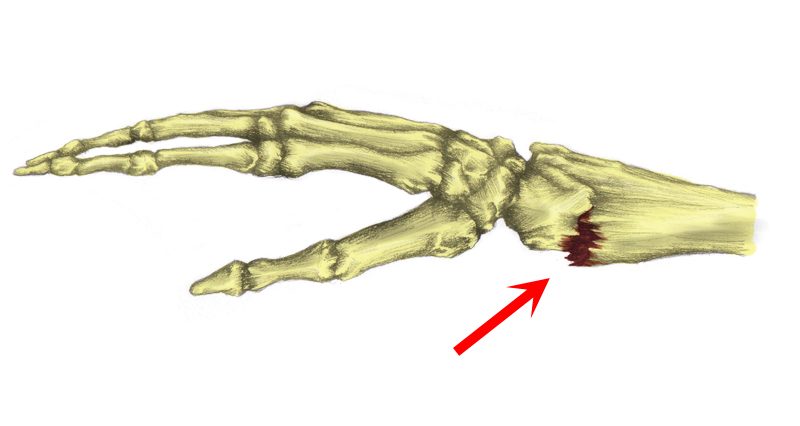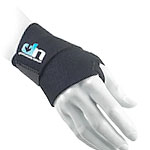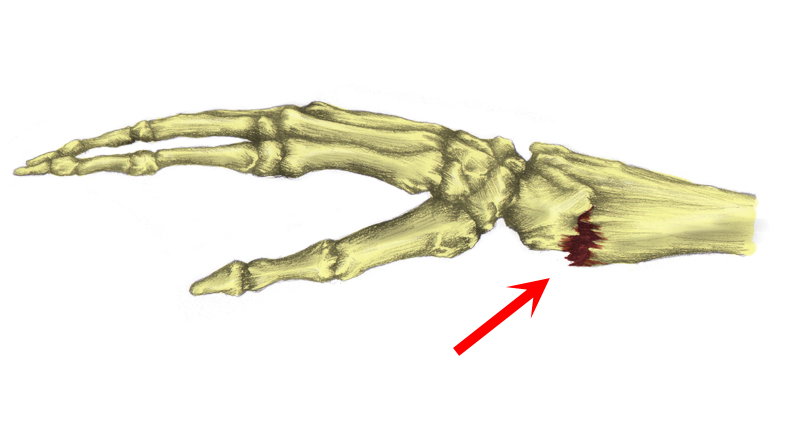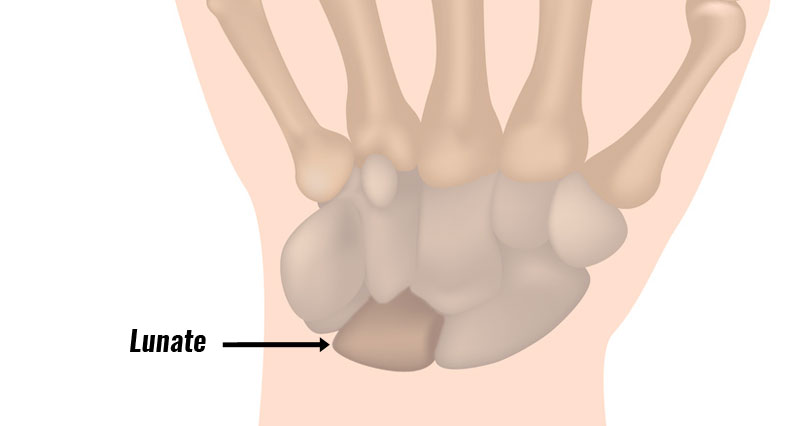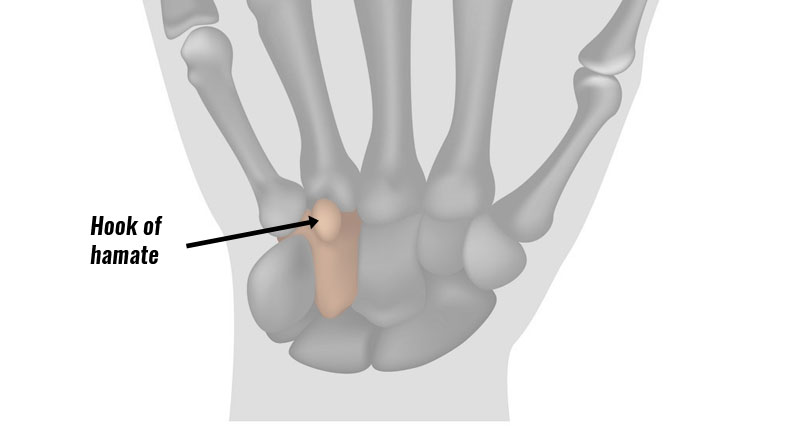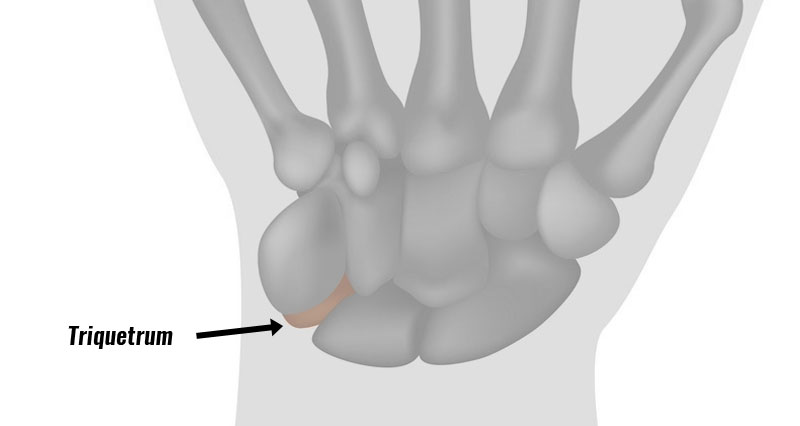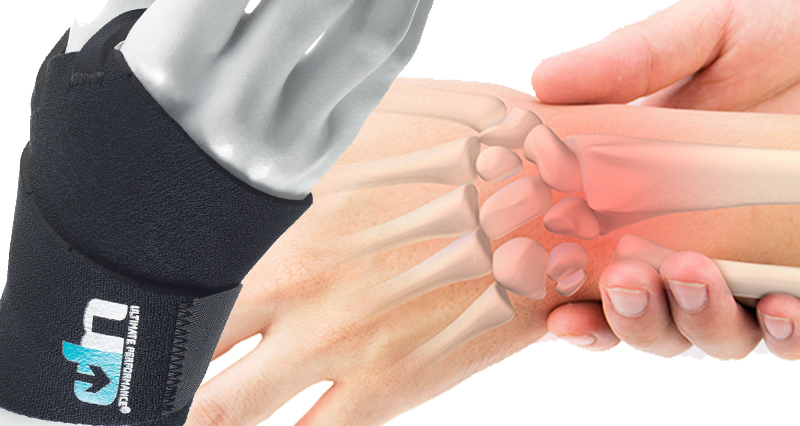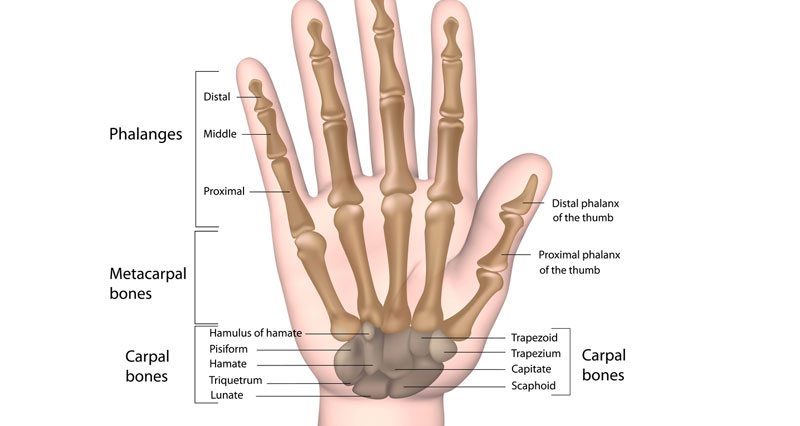A Colles fracture is a particular type of broken wrist which involves a break of the radius or forearm bone on the thumb side of the wrist. Deformity, severe pain and swelling would indicate this type of fracture, which is most often caused by a fall. Medical help is needed immediately to repair this wrist injury.
Symptoms
- Symptoms include instant pain in the wrist with rapid swelling.
- The wrist may look deformed – known as a dinner fork deformity.
- The patient will have considerable pain when trying to move the wrist.
- In very severe wrist fractures one end of the bone may pierce the skin which is known as an open fracture.
Diagnosis
- To be diagnosed as a Colles fracture the break in the bone has to be a transverse fracture within 1 inch of the wrist joint, with a fractured fragment of bone being displaced upwards.
What causes a Colles fracture?
The most frequent cause of a Colles fracture is a fall onto an outstretched hand. This is especially common in older females who suffer from Osteoporosis (brittle bones).
Often patients will not know they have weak bones. Due to the force required to fracture the radius, sometimes a fracture at the end of the Ulna will also occur. Soft tissue injuries to the ligaments and tendons at the wrist are also likely to occur.
Treatment
- If you suspect a wrist fracture then seek urgent medical attention immediately.
- An X-ray should be taken to determine the extent of the fracture and displacement of the bone fragment.
- A full examination will help to rule out any other associated injuries. Sometimes the bone fragment may be broken into more than one piece, known as a comminuted fracture.
Colles Fracture Surgery
The treatment of a Colles fracture depends on the extent of the injury. A straightforward fracture with no displacement will simply require casting to immobilise the bones until they are healed. This is usually around 6 weeks. A splint may be used for the first few days to allow the swelling to go down before the cast is applied. Where there is minor displacement, a closed reduction may be performed, which is where the Doctor manipulates the arm until the bones align, before the cast is applied.
In more complicated cases where the bones are considerably displaced, or the fragment is in two or more pieces surgery may be required. The surgeon will realign the fragments and use pins or wires to hold them in place. The arm is then splinted for a few days to allow swelling to settle before being put in a plaster cast.
Once the cast is removed, physical therapy should be undertaken to regain full movement and strength in the wrist. This will involve mobility exercises and exercises to strengthen the wrist such as using hand putty.
